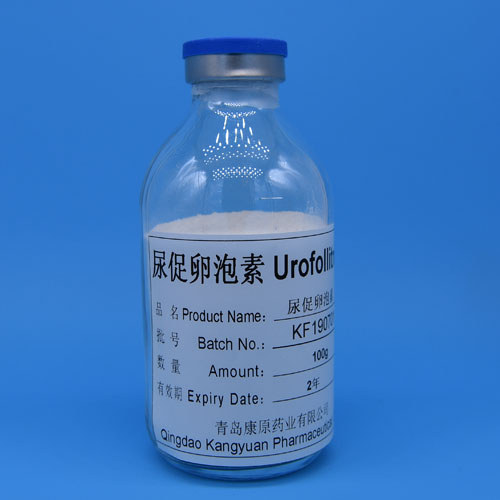In the realm of assisted reproductive technologies (ART), Hormone-Modified
Gonadotropins (HMG) and Urofollitropin have emerged as crucial tools in
addressing infertility issues. This article explores the significance of HMG and
Urofollitropin in ART, shedding light on their mechanisms of action and their
contribution to reproductive success.
HMG: Enhancing Ovulation Stimulation HMG, a purified form of human
follicle-stimulating hormone (FSH) and luteinizing hormone (LH), is designed to
boost the stimulation of ovarian follicles. By directly acting on the ovaries,
HMG promotes the development and maturation of multiple follicles, increasing
the chances of successful ovulation and subsequent fertilization in ART
procedures.

Urofollitropin: Supporting Controlled Ovarian Stimulation Urofollitropin,
derived from the urine of postmenopausal women, primarily contains highly
purified FSH. It plays a critical role in controlled ovarian stimulation (COS),
where controlled follicular development is essential for optimizing reproductive
outcomes. Urofollitropin provides consistent and precise stimulation, enabling
effective timing of ovulation induction and enhancing the chances of successful
fertilization.
Synergistic Combination: Amplifying ART Success Rates The combined use of
HMG and Urofollitropin has revolutionized ART treatments. Their synergistic
effect allows for a more precise control over follicular development, leading to
improved patient response and higher pregnancy rates. By harnessing the unique
properties of both hormones, reproductive specialists can tailor protocols best
suited to individual patients, optimizing chances of successful conception.
Advancements in Therapy: Individualized Treatment Approaches Extensive
research in ART has paved the way for more individualized treatment approaches.
By carefully adjusting dosage and timing, reproductive specialists can customize
therapy using HMG and Urofollitropin to suit specific patient needs. This
personalized approach not only enhances treatment efficacy but also minimizes
potential risks and side effects, further improving patient outcomes.
HMG and Urofollitropin have revolutionized ART by enabling specialized and
targeted interventions to address infertility concerns. Their integral roles in
ovulation stimulation and controlled ovarian stimulation have significantly
contributed to the success rates of ART procedures. With continued advancements
in individualized treatment approaches, the efficacy and safety of HMG and
Urofollitropin are poised to empower more individuals and couples on their
journey towards parenthood.